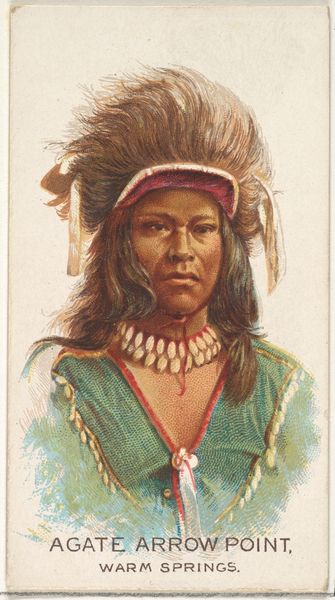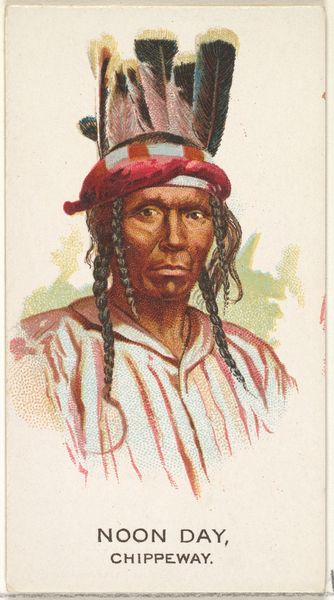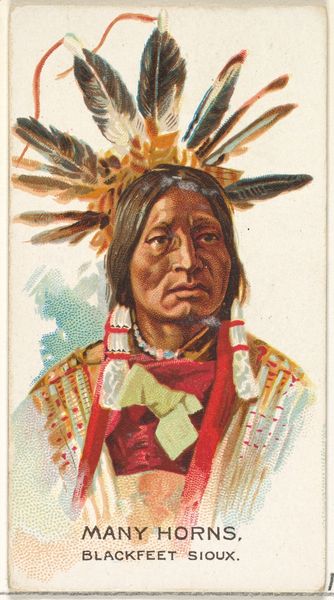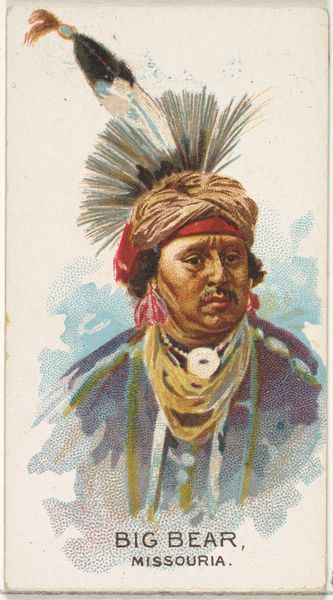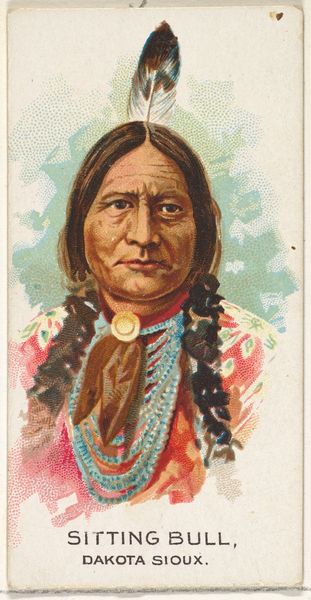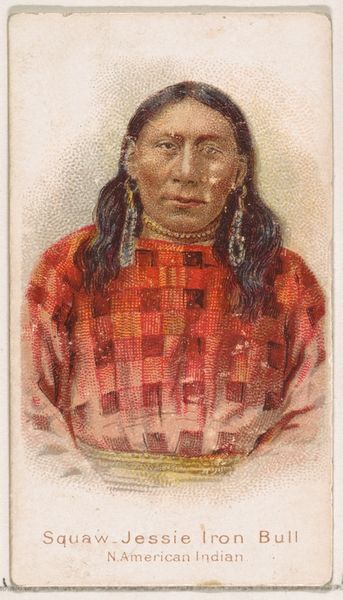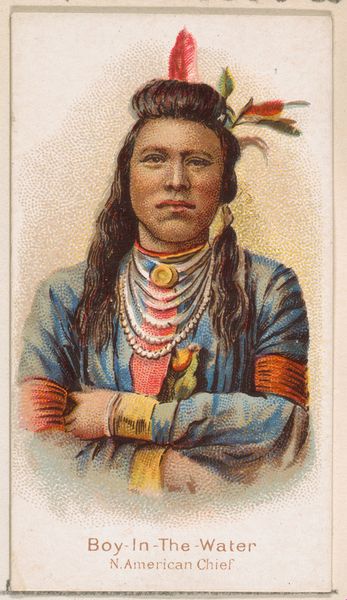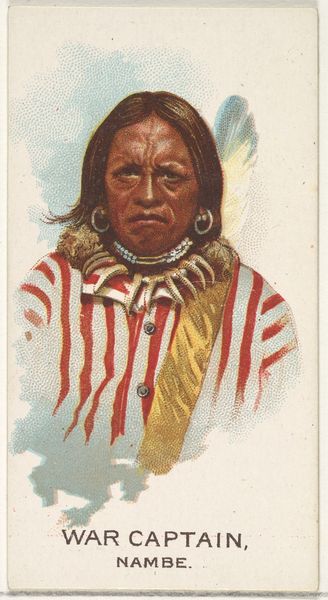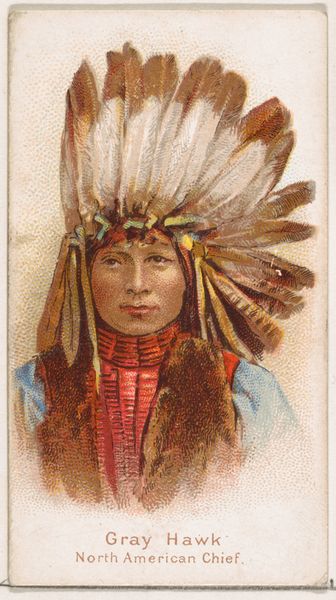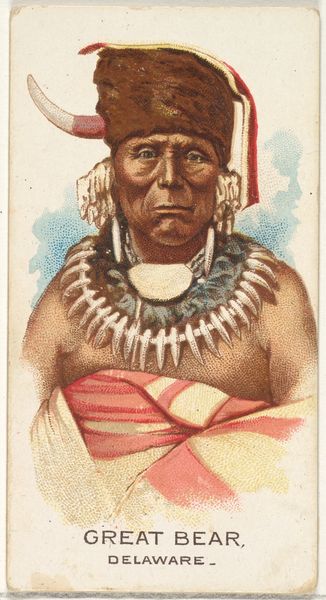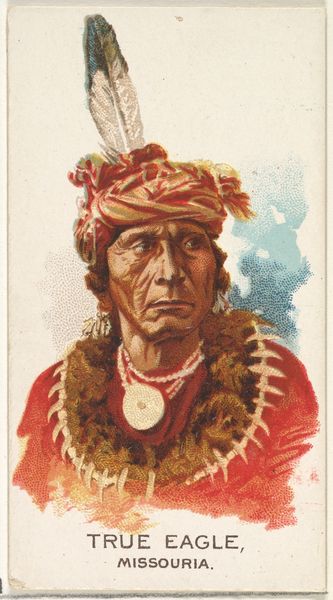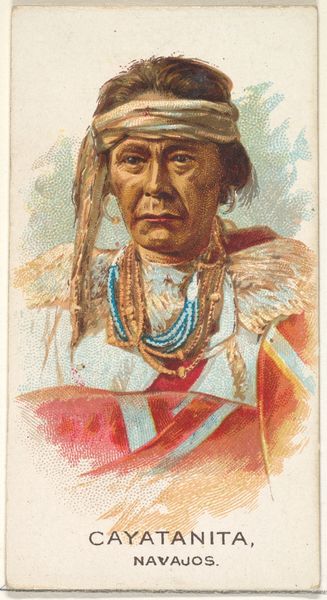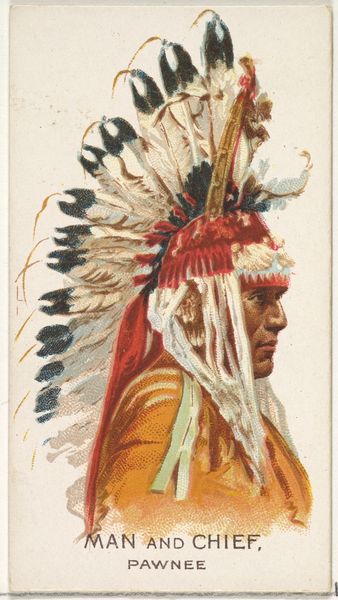
Clam Fish, Warm Springs, from the American Indian Chiefs series (N2) for Allen & Ginter Cigarettes Brands 1888
0:00
0:00
drawing, coloured-pencil, print
#
portrait
#
drawing
#
coloured-pencil
# print
#
coloured pencil
Dimensions: Sheet: 2 3/4 x 1 1/2 in. (7 x 3.8 cm)
Copyright: Public Domain
Curator: The individual represented in this drawing seems both regal and incredibly self-possessed. Editor: That’s an interesting observation. This is "Clam Fish, Warm Springs" from the "American Indian Chiefs" series, produced by Allen & Ginter around 1888. These were trade cards included with cigarette packs. The portrait is rendered with colored pencil and then printed. We can certainly view this aesthetically as a striking artwork, but should also address its function as advertisement. Curator: Yes, absolutely. And how that very function influences our understanding. Note the attention to detail in the headdress – the interplay of blue, red, and cream-colored feathers creating a vibrant halo around his face. How are those natural materials procured, prepared and transformed into objects of adornment for symbolic or capital value? Editor: I’m struck by the symmetry in the composition; the way the artist balances the figure's face with the elaborate headdress and jewelry. And the careful use of color. There’s something inherently pleasing in that formal structure. Curator: It's also worth looking closely at what is absent: who drew this? Allen and Ginter. We have access to this "Chief"'s image through their drawings but, as far as I am aware, this rendering doesn't involve collaborative creation or financial benefits for Clam Fish or members of the Warm Springs. Editor: Do you see some inherent contradiction, there, that form obscures? Because I think the colors serve to bring the figure forward, while that bright headdress has a radiating, energetic quality to it. The technique creates this overall aura of strength and dignity, which, to my eye, transcends the limitations of its intended commercial context. Curator: I would simply propose that understanding the context adds further significance to this artistic endeavor rather than reducing it. In truth, this object has a power that I believe emerges from, not despite, the labor involved in constructing meaning via cultural production, reproduction, and circulation. Editor: Fair enough. It’s difficult to deny the image's undeniable visual presence, even if that power emerged through uneven forces of creation.
Comments
No comments
Be the first to comment and join the conversation on the ultimate creative platform.
